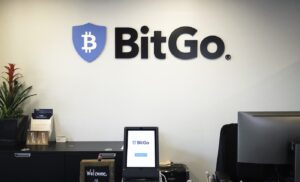Uniswap’s governance token, UNI, has hit a significant milestone: its four-year unlocking cycle is complete, and 100% of the token supply is now in circulation. This pivotal moment, highlighted by on-chain analyst Ember on X (formerly Twitter), marks a substantial shift in the UNI market landscape.
Launched in September 2020, UNI’s distribution was meticulously planned. Initially, 83% of the total supply was allocated to the team, investors, advisors, and the community treasury, with the remaining 17% set aside for liquidity mining incentives and early user airdrops. As of now, the unlocking period has ended, making all UNI tokens potentially available for market activity. However, the flow of these tokens into the market has been notably gradual and steady.
Distribution Breakdown And Market Impact
Of the total UNI supply, 2% was allocated as liquidity mining incentives, and 15% was distributed through an airdrop to early users. The remaining 83% was designated for the team, investors, advisors, and the community treasury. Now that the unlocking period is over, it’s crucial to assess the impact of these allocations on UNI’s market performance.
The community treasury received 430 million UNI, representing 43% of the total supply. This significant chunk of tokens is now unlocked, but only 30 million UNI have been released into the market, with just 2 million UNI injected so far. A substantial 399,789,850 UNI remains in the treasury, and the slow release suggests a deliberate strategy to manage the impact on the market.
Similarly, the 400 million UNI allocated to the team, investors, and advisors are now available. To date, around 58.1 million UNI have been introduced to the market, with major stakeholders like Andreessen Horowitz (a16z) retaining their substantial holdings. Despite the full unlocking, only about 258.3 million UNI—approximately 25.83% of the total supply—are actively circulating.
Implications for UNI’s Price and Liquidity
The gradual release of UNI tokens means that the market has not been flooded with new supply, which could mitigate potential negative impacts on UNI’s price. Most of the newly unlocked tokens are still held by large investors, leaving traders and investors in anticipation of future market movements.
This shift in UNI’s supply dynamics introduces both opportunities and risks for market players. As the community treasury and large holders continue to manage their substantial UNI allocations, the market will closely watch for any signs of increased selling pressure or further strategic moves.
In conclusion, while the complete unlocking of UNI tokens represents a notable change, the current slow rate of token release helps maintain market stability. The next phase of Uniswap’s lifecycle will be crucial as the community and investors navigate the evolving landscape and adjust their strategies accordingly.
Disclaimer: The information in this article is for general purposes only and does not constitute financial advice. The author’s views are personal and may not reflect the views of Chain Affairs. Before making any investment decisions, you should always conduct your own research. Chain Affairs is not responsible for any financial losses.



